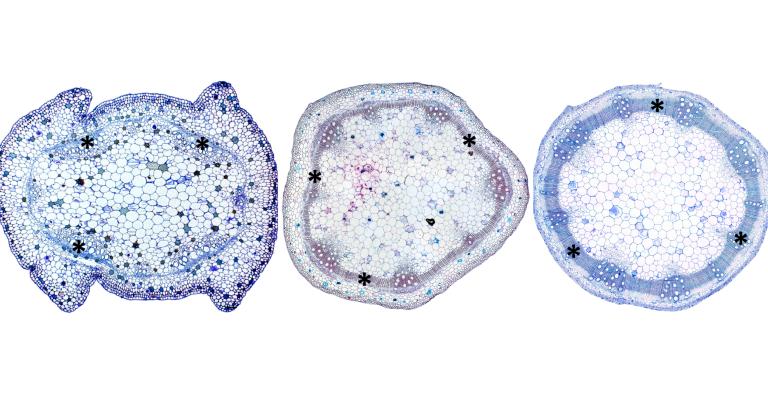
It is crucial to better understand how wild plants and crops respond to drought stress in a world facing global change. But we still do not know which set of characters regulate drought tolerance in a given species.
Many studies have demonstrated that gas embolisms in the water transport system of plants are a main reason why plants die when they face drought stress. This so-called hydraulic failure can spontaneously occur under drought stress, but some (drought-tolerant) species are much better adapted to avoid lethal levels of embolisms than other (more sensitive) species. Embolism resistance in stems of woody and herbaceous species can be measured to estimate drought tolerance, and these experimental results can be linked with anatomical observations. The two anatomical traits we are mainly focusing on are: proportion of woodiness or stem lignification, and ultrastructure of interconduit pits.